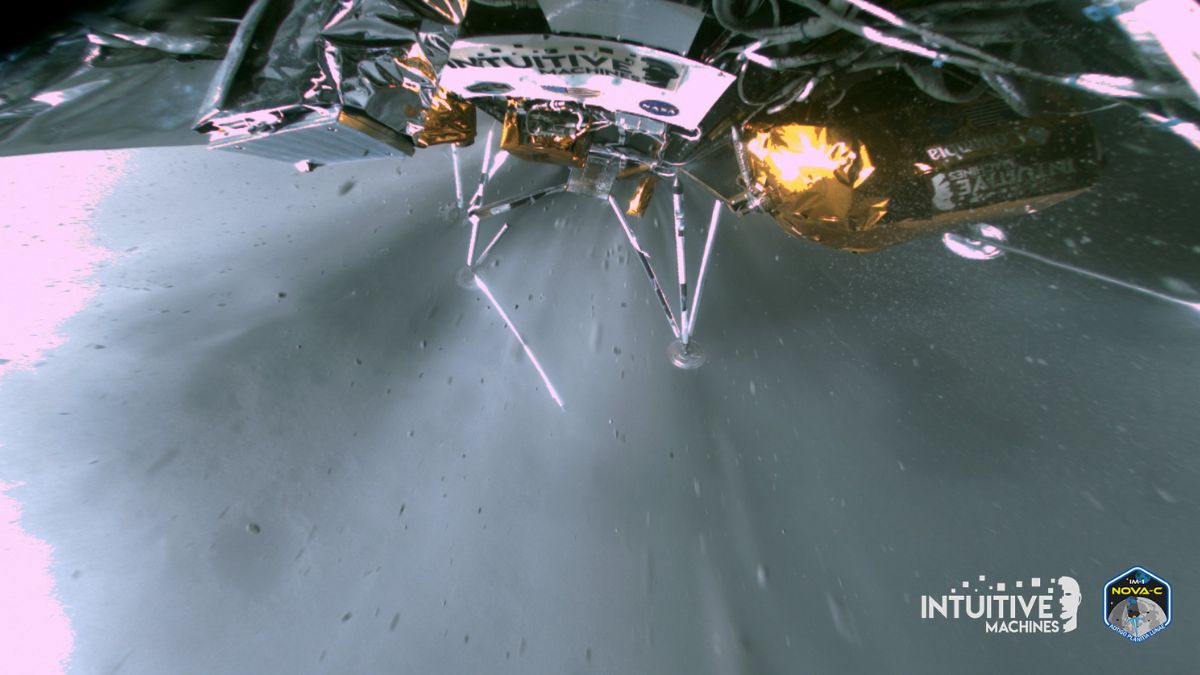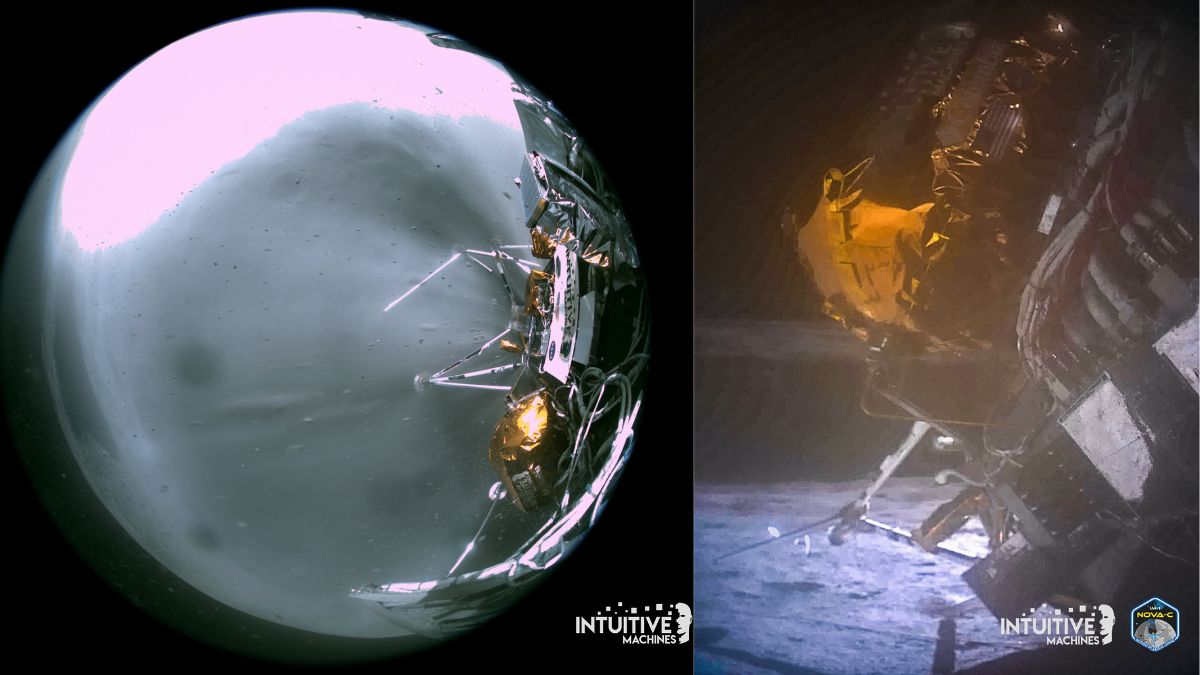Intuitive Machines Shares 1st Images Of 'Scrappy' Odysseus Touchdown, Says 2 Actions Helped Lander Lean 'Gently' On Moon
Odysseus's landing images show that one of the lander's legs is tilted, which is why NASA described it as a "scrappy little guy" on the Moon. They also show the lander's orientation.

Intuitive Machines, the Texas-based aerospace firm that landed the first commercial spacecraft on the Moon as part of the Intuitive Machines 1 mission (IM-1), has shared the first images of the lander's lunar touchdown. The images show the lander's orientation, and a view of the Moon's South Pole region. The spacecraft, called Odysseus or NOVA-C, made a soft landing on the lunar south pole on February 23, 2024, marking the United States' return to the Moon over 50 years after Apollo 17, and making the US the second country in the world to softly land a spacecraft on the Moon's south pole.
By landing Chandrayaan-3 on the lunar south pole on August 23, 2023, India became the first country to achieve this feat.
‘Scrappy little guy’ on the Moon
Odysseus's landing images show that one of the lander's legs is tilted, which is why NASA described it as a "scrappy little guy" on the Moon.
However, two actions enabled Odysseus to "gently lean" into the lunar surface, according to Intuitive Machines.
One of the images shows that the lander's landing strut (rod) performed its primary task, which is to absorb first contact with the lunar surface. Also, Odysseus's liquid methane and liquid oxygen engine was throttling during the touchdown, providing stability. Intuitive Machines wrote on X (formerly Twitter) that the firm believes these are the two actions which helped the lander lean "gently" into the lunar surface. All this preserved Odysseus's ability to return scientific data to Earth.

On February 27, Odysseus captured an image showing the lander's position on the lunar surface. This is one of the first images to clearly show Odysseus's landing legs on the Moon. Flight controllers commanded the lander to capture this image using the narrow-field-of-view camera.

According to Intuitive Machines, flight controllers had previously attempted to obtain landing images, and pictures from subsequent days, but all of them were "unusable".
Other accomplishments made by Odysseus
Odysseus has transmitted to Earth science data obtained by all the NASA payloads the lander is equipped with, making it the first commercial lunar lander to achieve this.
The successful operation of Intuitive Machines's liquid methane and liquid oxygen propulsion system in deep space is also a major accomplishment, the firm said.
According to NASA, over 350 megabits of science data obtained from Odysseus have been downloaded, and are ready for analysis. All powered NASA payloads operated and received data during transit as well as after landing.
ALSO READ | Can You Ace This Science Quiz? Test Your Scientific Knowledge With These Questions
Odysseus continues to generate solar power
In a February 28 mission update on X, Intuitive Machines said that Odysseus was still generating solar power on the Moon, contrary to earlier speculations that the lander's mission life was likely to end in the early hours of February 28 due to the batteries losing their power.
Since Odysseus continued to generate solar power, flight controllers kept gathering data from the lunar south pole, and were using the additional time to maximise mission operations.
Odysseus landed sideways on the Moon
Ahead of the lunar landing, an in-flight error of Odysseus's laser-guided range finders occurred, because of which flight controllers had to implement a solution that is believed to be one of the reasons why the spacecraft landed sideways on the Moon. The sideways landing was the reason why it was speculated that Odysseus's life would end five days after landing, instead of 14.
Odysseus's historic landing, and valuable scientific data collected by it in a short tenure suggest that the mission could be the next giant leap towards humanity's lunar ambitions.







































